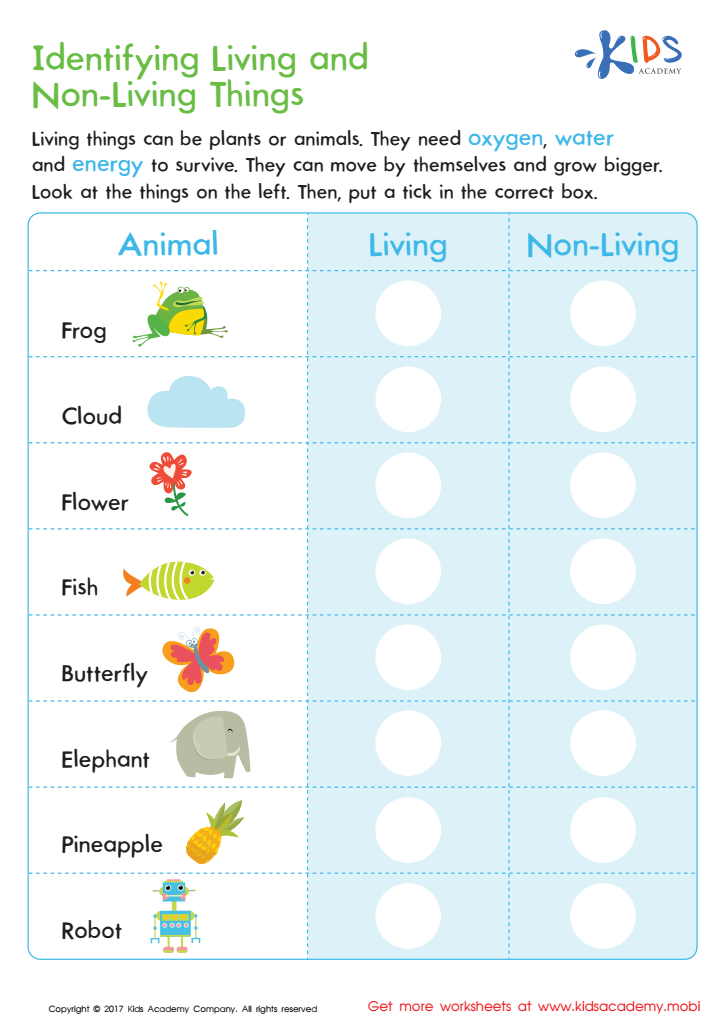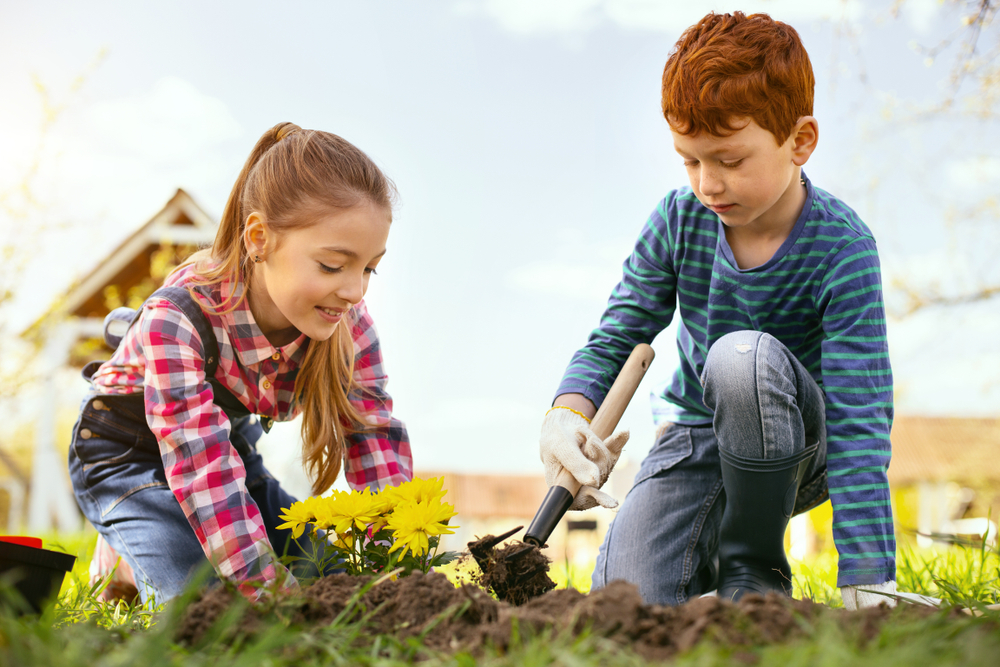Understanding living things Worksheets for Kids
1 filtered results
-
From - To


Identifying Living or Non–living Worksheet
Question/Answer
Why is the Understanding living things skill important for Kindergarten students?
The "Understanding living things" skill is crucial for Kindergarten students as it lays the foundational knowledge of biology, nurtures curiosity about the natural world, encourages respect for all forms of life, and promotes environmental awareness from an early age. This understanding helps children appreciate the diversity and complexity of life, fostering a sense of connection and responsibility towards nature.
What does the Understanding living things skill mean when it comes to Kindergarten Plants and Animals learning?
The "Understanding living things" skill in the context of Kindergarten Plants and Animals learning refers to a foundational knowledge of the basic needs, characteristics, and life cycles of plants and animals. It involves recognizing similarities and differences between living organisms and comprehending how they grow, survive, and interact with their environment.
What are some effective activities to train students’ Understanding living things skill when teaching them about Plants and Animals?
Effective activities include hands-on experiments like dissecting plants to study parts and functions, creating terrariums to observe plant growth, using microscopes to examine animal cells, organizing field trips to nature reserves for direct observation of flora and fauna, and interactive games that classify plants and animals based on their characteristics.
 Assign to the classroom
Assign to the classroom












